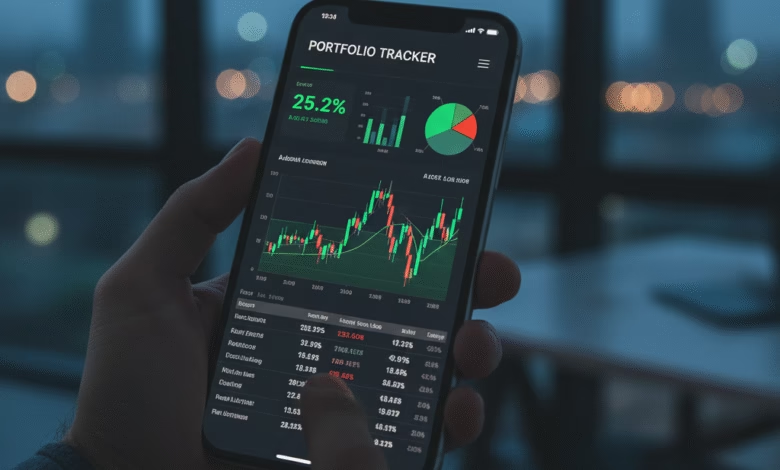What is the S&P 500 and why is it important?
Learn what the S&P 500 index is and how it represents the market

When you hear financial news anchors talk about “the market” being up or down for the day, there’s a very high chance they are referring to the S&P 500. For decades, this single number has served as the primary benchmark for the U.S. stock market and, by extension, the health of the American economy. But what exactly is the S&P 500?
Is it a company you can buy stock in? A government agency? The answer is much simpler and far more powerful.
Understanding the S&P 500 is a cornerstone of financial literacy. It’s the key to unlocking a clearer picture of the investment world, providing context for market movements, and offering one of the most effective ways for everyday people to build long-term wealth. This in-depth guide will break down everything you need to know, from its basic definition to the intricate reasons why it holds such a vital place in the world of finance.
Decoding the S&P 500: A Snapshot of the U.S. Economy

At its core, the Standard & Poor’s 500, or S&P 500, is a stock market index. Think of it as a curated list that tracks the stock performance of 500 of the largest and most influential publicly traded companies in the United States. It’s not a single stock you can buy, but rather a “basket” of stocks whose collective performance is measured to create a single, representative value.
Because this list includes corporate giants from nearly every major industry—from technology and healthcare to consumer goods and finance—it provides a comprehensive and reliable snapshot of the overall health and sentiment of the U.S. stock market. In fact, the companies in the S&P 500 represent approximately 80% of the total value of the U.S. stock market. When the S&P 500 is rising, it generally means that the country’s largest corporations are doing well. When it’s falling, it signals economic headwinds and investor concern.
You’ll recognize many of the names in the index immediately: Apple, Microsoft, Amazon, Coca-Cola, and Johnson & Johnson. The performance of these household names, and hundreds of others, is what drives the daily movements of the S&P 500.
How a Company Gets Into the Exclusive S&P 500 Club
Getting a company’s stock included in the S&P 500 is like being invited to an exclusive, high-stakes club. It’s not an automatic process based on size alone. A committee at S&P Dow Jones Indices makes the final decision, and they have a strict set of criteria designed to ensure the index remains a high-quality, stable, and accurate representation of the U.S. market.
While the exact formula is proprietary, the key eligibility requirements include:
- Market Capitalization: This is the total value of a company’s outstanding shares. To even be considered, a company must be a “large-cap” stock, meaning it must have a market capitalization of at least $14.5 billion (this figure is adjusted periodically).
- Profitability: A company must be financially viable. The committee requires that the sum of its earnings over the most recent four quarters, as well as the most recent single quarter, must be positive. This rule helps to filter out speculative or financially unstable companies.
- Public Float: At least 50% of the company’s stock must be available for trading by the public. This ensures that the stock’s price isn’t easily manipulated by a small number of insiders.
- Liquidity: The stock must be actively traded. This is measured by ensuring a certain number of shares are traded each month, proving that there is a healthy market of buyers and sellers for the stock.
- U.S. Domicile: The company must be based in the United States.
Companies can also be removed from the S&P 500 if they no longer meet these criteria, if they are acquired by another company, or if they are taken private. This regular “rebalancing” ensures the index remains relevant and reflective of the current economic landscape.
Market-Cap Weighting: Why the Biggest Companies Have the Biggest Impact
A crucial concept to understand about the S&P 500 is that it is a market-capitalization-weighted index. This means that companies with a higher total market value have a greater impact on the index’s movement than smaller companies.
Let’s break that down with a simple example:
- Company A has a market cap of $2 trillion.
- Company B has a market cap of $200 billion.
In a market-cap-weighted index, a 1% change in Company A’s stock price will move the entire index far more than a 1% change in Company B’s stock price.
This methodology has significant implications. The performance of a handful of mega-cap companies, like the tech giants, can have an outsized influence on the daily performance of the entire S&P 500. This is why you’ll often hear analysts discussing the performance of the “Magnificent Seven” or other large tech stocks; their fate is closely tied to the direction of the broader market index.
This is different from other indexes like the Dow Jones Industrial Average, which is “price-weighted,” meaning stocks with higher share prices have more influence, regardless of the company’s actual size. Most investment professionals consider market-cap weighting to be a more accurate representation of the market’s overall value.
The S&P 500’s Historical Performance: A Story of Long-Term Growth

One of the most compelling reasons for the S&P 500’s importance is its remarkable track record of long-term growth. While its value can be volatile in the short term, experiencing dramatic swings and painful downturns (known as bear markets), its historical trajectory has been consistently upward.
Since its modern inception in 1957, the S&P 500 has delivered an average annual return of approximately 10%. This figure includes both the appreciation of stock prices and the reinvestment of dividends paid out by the companies in the index.
To put that into perspective, an investment of just $100 in the S&P 500 back in 1957 would have grown to over $96,000 by 2025, assuming all dividends were reinvested.
This long-term performance has weathered numerous storms:
- The high inflation of the 1970s
- The “Black Monday” crash of 1987
- The dot-com bubble burst in 2000
- The global financial crisis of 2008
- The COVID-19 pandemic in 2020
In every single one of these instances, the market eventually recovered and went on to reach new all-time highs. This history provides a powerful lesson for investors: while short-term volatility is scary, the U.S. economy and its leading companies have shown incredible resilience and an ability to generate substantial wealth over the long run.
How You Can Invest in the S&P 500: A Beginner’s Guide
Since the S&P 500 is an index and not a stock, you cannot buy it directly. However, investing in it is incredibly easy and accessible for everyone, thanks to two popular investment vehicles: index funds and exchange-traded funds (ETFs).
- S&P 500 Index Funds: These are mutual funds that are designed to do one thing: mirror the performance of the S&P 500. The fund’s manager buys and holds the stocks of all 500 companies in the index in the exact same proportion as their weighting in the index. Because this is a passive strategy that doesn’t require active stock picking, these funds typically have very low management fees (known as expense ratios).
- S&P 500 ETFs: An ETF is similar to an index fund, but it trades on a stock exchange just like an individual stock. This means its price fluctuates throughout the day, and you can buy or sell shares at any time the market is open. S&P 500 ETFs also aim to replicate the index’s performance and are known for their low costs and high liquidity.
Why is this approach so popular, especially for beginners?
- Instant Diversification: By buying a single S&P 500 index fund or ETF, you are instantly invested in 500 of America’s leading companies across a wide range of industries. This automatically diversifies your portfolio and reduces the risk associated with investing in just a handful of individual stocks.
- Low Cost: Passive investing through index funds is one of the most cost-effective ways to participate in the stock market. Low expense ratios mean more of your money stays invested and working for you.
- Simplicity: You don’t need to spend countless hours researching individual companies or trying to time the market. The strategy is simple: buy the market and hold it for the long term.
You can purchase these funds through any standard brokerage account, an Individual Retirement Account (IRA), or your employer-sponsored 401(k) plan.
The S&P 500 as a Powerful Economic Indicator

Beyond its role as an investment benchmark, the S&P 500 is a crucial tool for economists and policymakers. It is one of the ten components of The Conference Board’s Leading Economic Index (LEI), a composite indicator used to predict the future direction of the U.S. economy.
The stock market is considered a “leading” indicator because its movements often anticipate economic trends. Investor sentiment, reflected in stock prices, can shift months before changes are seen in broader economic data like GDP growth or unemployment rates. If the S&P 500 begins a sustained decline, it can signal that investors are anticipating a recession. Conversely, a rising market often precedes a period of economic expansion.
This is because the stock prices of the 500 companies in the index are based on their expected future earnings. When investors are optimistic about the future of the economy, they are willing to pay more for those future earnings, driving stock prices up. When they are pessimistic, they sell stocks, causing prices to fall.
Why the S&P 500 Is Your Financial North Star
The S&P 500 is more than just a number on a screen. It is a powerful symbol of American capitalism, a comprehensive barometer of our economic health, and one of the most accessible tools for building generational wealth.
For the average person, it demystifies the often-intimidating world of investing. It offers a straightforward, low-cost, and historically proven path to participating in the growth of the nation’s most successful companies. Whether you are saving for retirement, a child’s education, or any other long-term financial goal, understanding the S&P 500 and using it as a core component of your investment strategy is one of the most powerful financial decisions you can make. It provides the context to ignore short-term noise and the confidence to stay invested for the long haul—the true keys to financial success.





